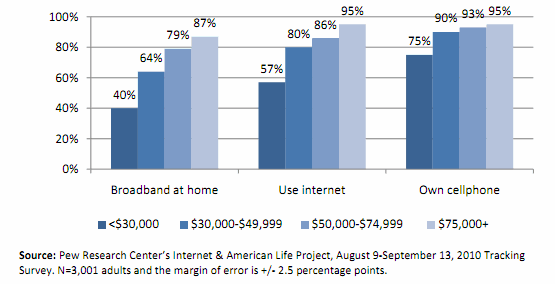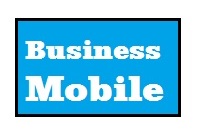 According to Pew Research figures, the iPad could potentially produce a wealth divide, where iPad-owning wealthy individuals gained access to data and information, that was out of the range of poor. However we think they’re missing something out in their figures.
According to Pew Research figures, the iPad could potentially produce a wealth divide, where iPad-owning wealthy individuals gained access to data and information, that was out of the range of poor. However we think they’re missing something out in their figures.
The Pew Research figures “Use of the internet in higher-income households” found that 95% of Americans who live in households earning $75,000 or more a year use the internet at least occasionally, compared with 70% of those living in households earning less than $75,000.
Pew are quite shocked by the figures, but to us it looks like the divide is actually quite small, we would have expected it to be much bigger. In terms of devices used the difference between the rich and poor is quite small for established tech like desktops and laptops where prices are at rock bottom, but as you would expect the divide is bigger for more expensive and niche tech like the Apple iPad and Amazon Kindle.

Comparison of broadband access at home, cell phone ownership, and internet usage by income brackets of general population
- 79% of those living in households earning $75,000 or more own desktop computers, compared with 55% of those living in less well-off homes.
- 79% of those living in higher-income households own laptops, compared with 47% of those living in less well-off homes.
- 12% of those living in higher-income households own e-book readers such as Kindles, compared with 3% of those living in less well-off homes.
- 9% of those living in higher-income households own tablet computers such as iPads, compared with 3% of those living in less well-off homes.
What Pew seem to miss is that the figures for mobile are actually quite healthy, 95% of higher-income households own some type of mobile phone compared with 83% in households with less income.
However what is worrying is that, although mobile phones are obviously in the reach of lower income users, what won’t be so acceptable is a two-tier pricing structure for mobile data. The higher you price data the less the lower-income users will surf. The key enabler for e-commerce was the “unlimited” broadband data tariffs, before the all you can eat tariffs we were a world of data clock watchers, after the tariffs we turned into a world of e-commerce spenders. To make sure m-commerce takes off we need to have all you can eat tariffs for mobile. By choosing to bring in complicated tariffs the industry is doing m-commerce and mobile no favours at all.
The full thirteen page report can be downloaded here http://pewinternet.org/~/media//Files/Reports/2010/PIP-Better-off-households-final.pdf
[ad name=”Google Text half banner advert “]